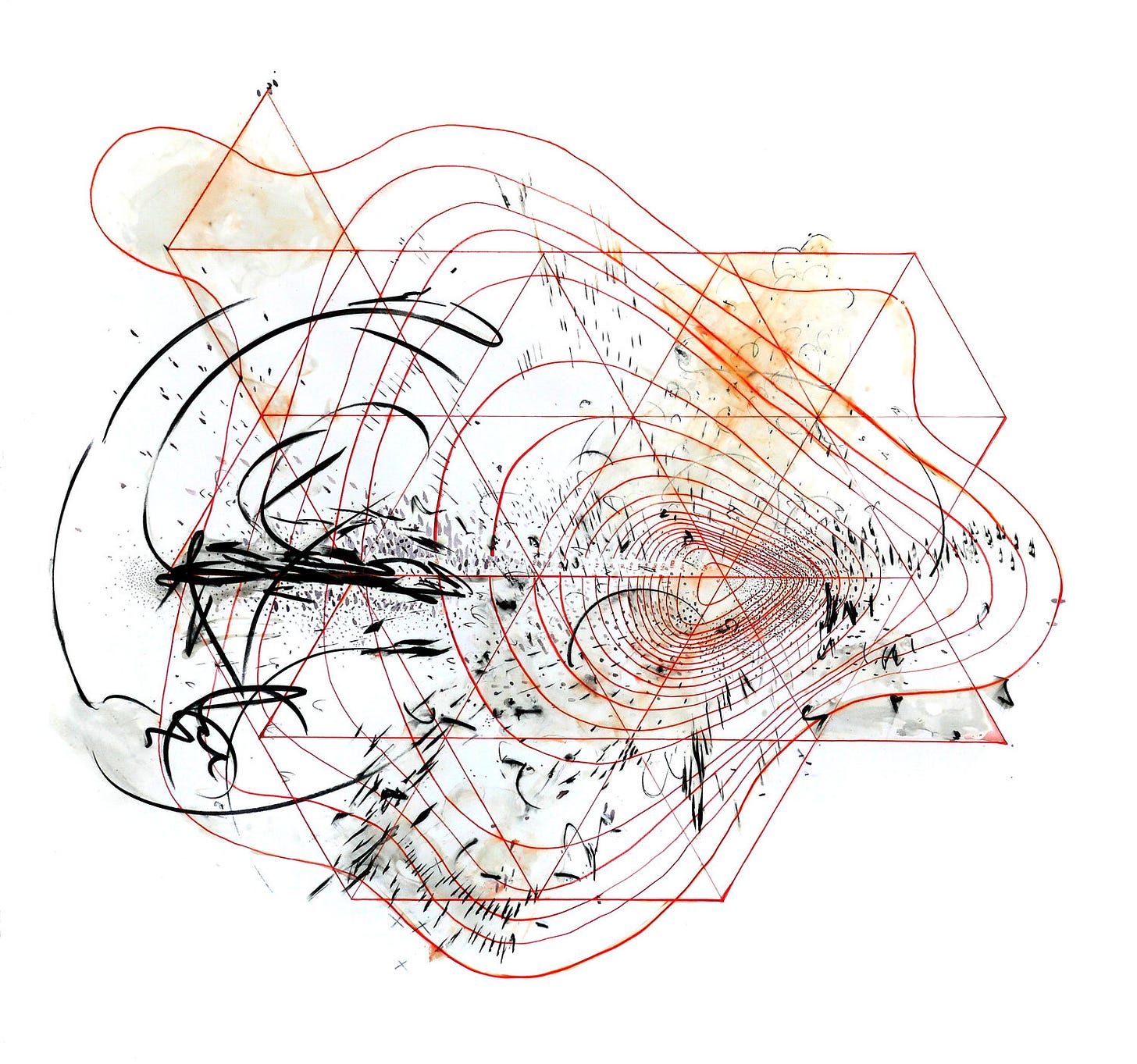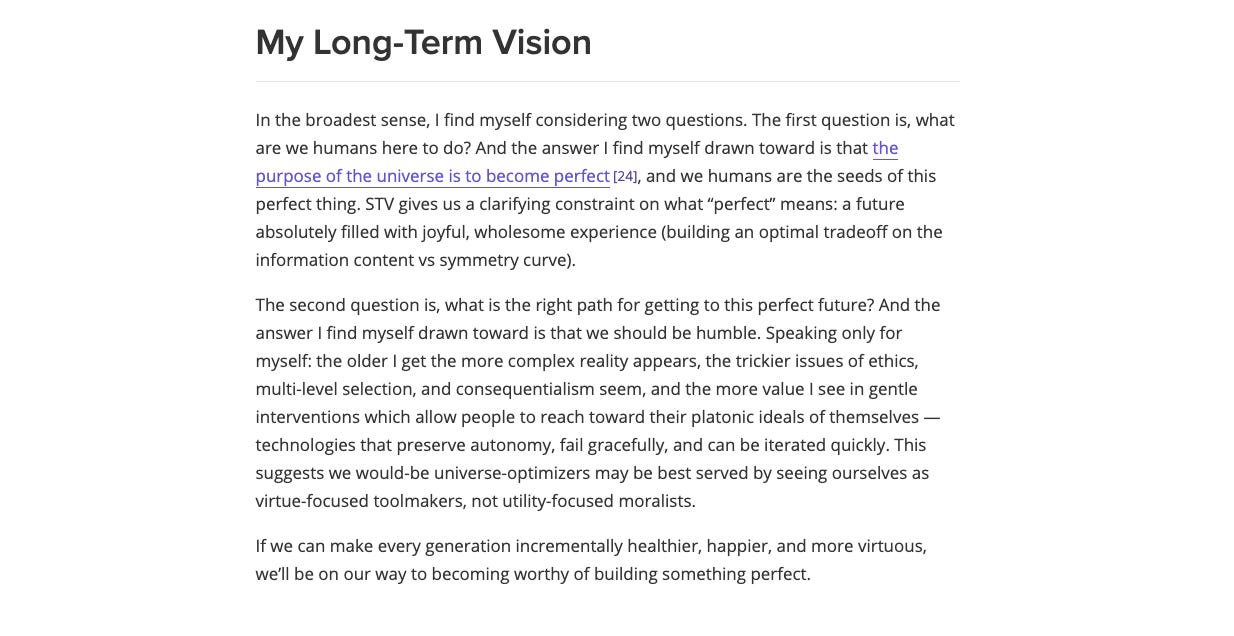Mind Matters is a newsletter written by Oshan Jarow, exploring post-neoliberal economic possibilities, contemplative philosophy, consciousness, & some bountiful absurdities of being alive. If you’re reading this but aren’t subscribed, you can join here:
Hello, fellow humans.
Two updates to share. First, on the podcast front.
In November, I’ll be speaking with Ruben Laukkonen, a coauthor on the phenomenally interesting paper on meditation and predictive processing that I wrote about in a past newsletter.
In February, I’ll be speaking with Philip Goff, a philosopher of mind who’s championing a new wave of interest in panpsychism, and is a self-described socialist, with a great essay about taxation in Aeon mag. We’ll explore how theories of consciousness, like panpsychism, might intersect with theories of the economy, like socialism. How might they feed off each other? Do certain theories of consciousness have normative implications for economic policy?
Second, on the personal front: I’m moving to Brooklyn (next week)! More on this below, but I’m looking forward to discovering all sorts of scenes, meeting all sorts of people, and the unknowns that arise in high-energy pockets of humans existing together.
The Symmetry Theory of Valence
The Symmetry Theory of Valence (STV) is a theory of consciousness that does two very unique and powerful things. Even better, it’s a glimmer of excitement amidst what is often a very barren and not-exciting landscape of research.
The first thing STV does is formalize consciousness into an objective-enough thing that we can do science on it without reducing it to its smallest possible sub-components that are way less exciting1.
The second thing is that it suggests criteria for making normative claims about what consciousness should be, what “good” and “bad” states of consciousness actually are, whereas other theories of consciousness are purely descriptive, offering no judgments about good or bad.
…
What Is the Symmetry Theory of Valence?
If you are at all interested, you should read Michael Edward Johnson’s A Primer on the Symmetry Theory of Valence here. It’s short & wonderful.
Integrated Information Theory (IIT, which I discussed with the neuroscientist Erik Hoel here) was the first theory attempting to mathematically formalize consciousness. Michael writes:
“The goal of IIT is to create a mathematical object ‘isomorphic to’ a system’s phenomenology — that is to say, to create a perfect mathematical representation of what it feels like to be something. If it’s possible to create such a mathematical representation of an experience, then how pleasant or unpleasant the experience is should be ‘baked into’ this representation somehow.”
STV builds on this, claiming that these mathematical formalisms make ‘shapes’, and the pleasantness (they use terms like “valence”, or “hedonic tone”, which are more correct, but also pretty niche) of any given experience is given by the symmetry of its shape.
So take any experience of consciousness, map it out into its corresponding mathematical shape, and the more symmetric it is, the more pleasant of an experience it is. If there’s dissonance, there’s suffering. Symmetry is the inverse of suffering.
In a sentence, STV claims that “harmony in the brain feels good, and dissonance feels bad.”
“STV proposes that, given such a mathematical representation of an experience, the symmetry of this representation will encode how pleasant the experience is. STV is a formal, causal expression of the sentiment that “suffering is lack of harmony in the mind”
The normative criteria: the more symmetry in a state of consciousness, the better. You can literally rank every possible conscious experience on a scale from worst to best, by the ratios of symmetry and dissonance present in their mathematical representation.
Now, I have no idea whether it’s possible to claim that every conscious experience has a mathematical representation unique to it, and that the fidelity between the qualia/phenomenology of that state and its mathematical shape is high enough to serve as a good proxy. If any of you do, would love to hear your thoughts.
But the theory is testable, and falsifiable, which means we just might find out.
…
An Economic Perspective on STV
Towards the end of his primer, Johnson writes:
Johnson has philosophy and neurotechnology in mind, but as I read this, it harmonizes exactly with why I’m so drawn to economics as a tool for improving consciousness.
“What is the right path for getting to this perfect future?”
“…gentle interventions which allow people to reach toward their platonic ideals of themselves - technologies that preserve autonomy, fail gracefully, and can be iterated quickly.”
This sounds like a good ethos for economic policy to me. Let’s look at an example.
I care a lot about basic income. I think it’s one of the highest leverage policy interventions we could make to not only preserve, but improve and democratize autonomy and agency (depending on the program specifics).
To approach basic income in the spirit of gentle interventions that can fail gracefully, and be iterated quickly, we can look toward the Jain Family Institute’s recent position paper, that outlines their support for a modest basic income.
To start, they suggest, we can pass a $250/month basic income that goes to all citizens below the age of 652.
We can pay for this by consolidating other welfare programs (which is good in itself, as we reduce bureaucracy), changing some tax credits & exemptions (which is good, because generally, the more exemptions in a tax code, the more opportunities for wealthy folks to hire lawyers to exploit them), and stepping up enforcement of existing tax laws (which is good, because we should enforce the laws we have in place, especially when they’re hypothesized to be leaving up to $600 billion dollars on the table in uncollected revenue).
As JFI points out, the optimal payment level of a guaranteed income might be higher than $250, but we can inch our way there. We can start small, and collect data on the way. We can improve our methodologies as we go. If we jump straight into an Andrew Yang, $12k/year for all policy, and it goes bad, that’s a very ugly crash we’re setting up.
…
Society Is One Big Neurofeedback Machine
In Richard Powers’ recent novel, Bewilderment, a young boy who’s undergoing a series of neurofeedback treatments sits in a frenetic airport lounge. TV’s in all corners are blaring the news. Eyes plugged into phones, scrolling platforms.
The young boy looks up at his father:
“Dad? Know how the training is rewiring my brain? His wave included all the craziness of the concourse. This is what’s wiring everybody else.”
Ezra Klein puts it this way. We might think,
“Wouldn't it be cool if we had a technology that could, in real time, change how we think, & change our neural pathways, & change our mental state in a particular direction.'
‘But of course, all of society IS that machine!’”

What kind of neurofeedback machine is society today? What are its parameters? Where are the most incisive leverage points for us to fiddle with those parameters, and improve the kinds of minds society churns out?
…
Build Qualia Infrastructure
One way to think of these parameters is qualia infrastructure.
The qualia of an experience is how that experience feels. Its hedonic tone, its valence, its subjective character, its ‘what-is-it-like-ness’.
Qualia infrastructure, then, is the scaffolding we’ve built to support qualia, to foster the kinds of experiences that show up in our consciousness’. The roads and bridges that support subjective experience. What might we add to a list of qualia infrastructure? Here are a few starters that come to mind:
Neurofeedback and/or ultrasonic neuromodulation rigs in every home
Meditation in every school
Enough money & access to public goods that no one's phenomenology is avoidably suffused with anxiety over basic survival (basic income, universal healthcare, etc)
Supermarkets full of good nutrition at reasonable prices. Farmers markets everywhere.
Psychedelic therapy available to all, & recreational psychedelics also available to all, albeit through a licensing program similar to driving tests & permits.
Parks in every neighborhood, with dedicated stargazing outposts.
Heavy taxes on advertising in public spaces, both digital & IRL.
Make buildings, cities, & our general built-environment beautiful again.
…
What would you add?
I’m Moving to Brooklyn
After a few years of threatening, Avery & I are finally moving to Brooklyn. I intend to have nothing less than a raucous, edifying, and nourishing time. If you’re in the area, I’d love to connect, and get busy cultivating community.
Is there an in-person salon culture already thriving? If not, let’s build one.
Are there psychedelic research groups, á la Alexander Shulgin, who all get together and co-explore altered states of consciousness? If not, let’s start one (in particular, I’m eager to try 5-MeO-DMT!).
Are there study circles who divide & survey the edgeless landscape of human knowledge, each reading in different domains, and reporting back to the group on their discoveries? If not, let’s circle up.
Are there meditation groups who get together every now & then to fill rooms with emanations of gamma wave synchrony? Let’s start an informal dharma club.
You get the idea. I’m excited, & hope to meet some of you. Please reach out if you’re in the area. Ginsberg is ringing in my ears, the volume rising as move-in day nears:
…angelheaded hipsters burning for the ancient heavenly connection to the starry dynamo in the machinery of night,
who poverty and tatters and hollow-eyed and high sat up smoking in the supernatural
darkness of cold-water flats floating across the tops of cities contemplating jazz,
who bared their brains to Heaven under the El and saw Mohammedan angels staggering on tenement roofs illuminated,
…
Also, I want to start a digital community (Discord/Slack/Whatever) for people in the New York City area who want to plug into the above sort of vibe. I’m sure this already exists, and I might just be asking for an invite. But if not, let’s get one rolling.
…
As always, you can respond directly to this email, or reach out on Twitter. You can find more essays & podcasts on my website. I’m here for conversation & community.
Until next time,
— Oshan
This isn’t unique to STV, it actually builds on Integrated Information Theory (IIT), which was the first to do this. STV takes the basic concept of IIT - creating mathematical ‘objects’ that correspond to a system’s phenomenology - and builds on it, suggesting that the valence of any given phenomenology will depend on the symmetry of that mathematical object, or shape.
I’m not saying this is my ideal next step. I’m still quite partial to a negative income tax that eliminates poverty, rather than a modest UBI that doesn’t. A modest starting point for NIT might be one where the poverty floor is set to 1/2 the poverty rate, which makes the program as affordable as JFI’s version of UBI, but makes a much larger dent in poverty. But this is a debate for elsewhere.

